Mushrooms are among the most fascinating organisms on Earth, exhibiting a remarkable diversity in form, color, and function. Some are well-known for their culinary and medicinal benefits, while others captivate with their unique appearances and behaviors. Below, we explore ten extraordinary mushroom species and their key characteristics.
Puffball (Basidiomycota) Puffball mushrooms are recognized for their round, enclosed shape, which houses spores that release in a cloud when mature. Found in forests and fields, certain species, like the Giant Puffball, are edible when young, though caution is required as they can resemble toxic varieties.
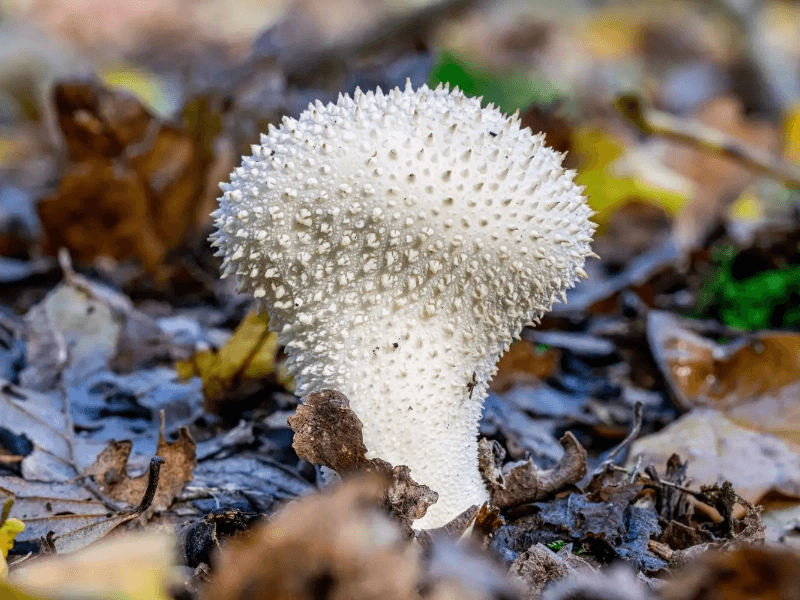
Indigo Milk Cap (Lactarius indigo) This striking blue mushroom exudes a deep blue latex when cut. Found in North America, Central America, and Asia, it grows in both deciduous and coniferous forests. Edible with a mildly peppery taste, it is often cooked to neutralize any irritants present in its raw form.
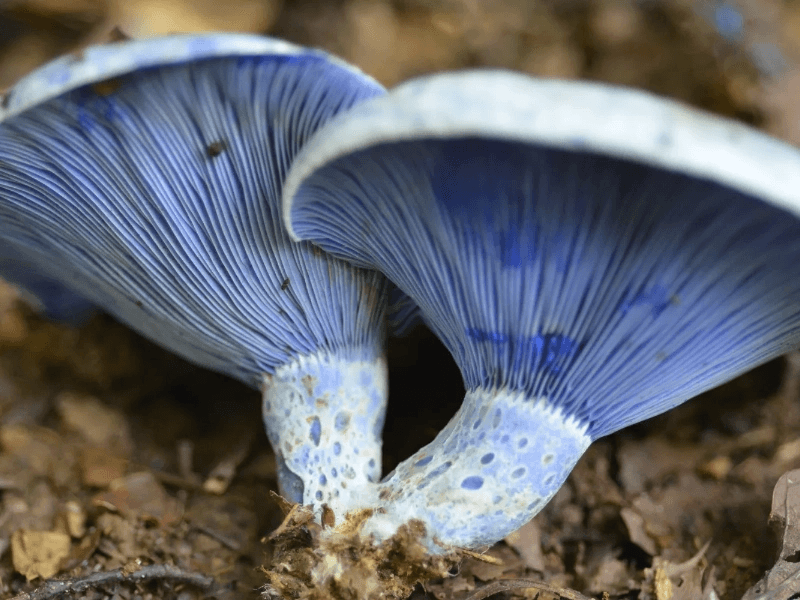
Latticed Stinkhorn (Clathrus ruber) Distinguished by its bright red, net-like structure, this fungus emits a strong odor to attract insects that help disperse its spores. Native to tropical and subtropical regions, it is known for its unique appearance and occasional use in traditional medicine.
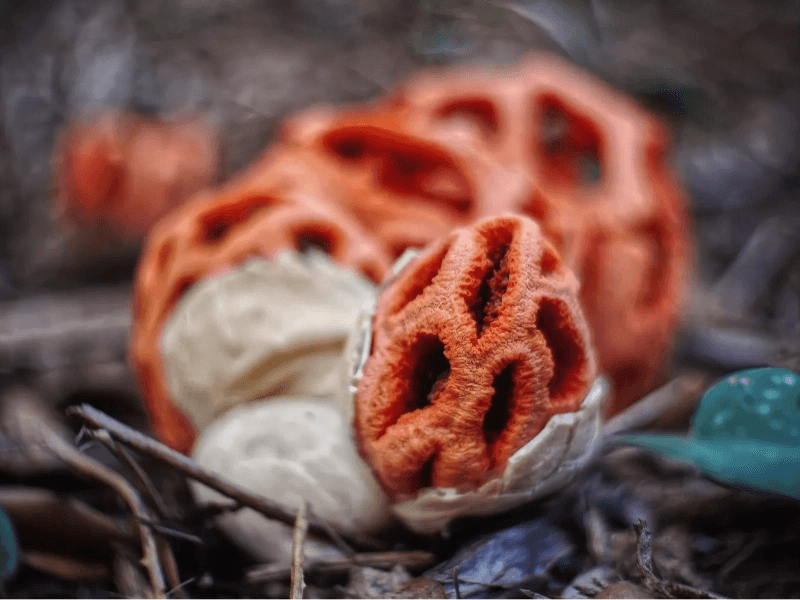
Bleeding Tooth (Hydnellum peckii) This unusual fungus secretes a red fluid that resembles blood, giving it a striking look. It thrives in coniferous forests of North America and Europe. While not toxic, its bitter taste makes it inedible. Researchers are studying its antimicrobial and anticoagulant properties.
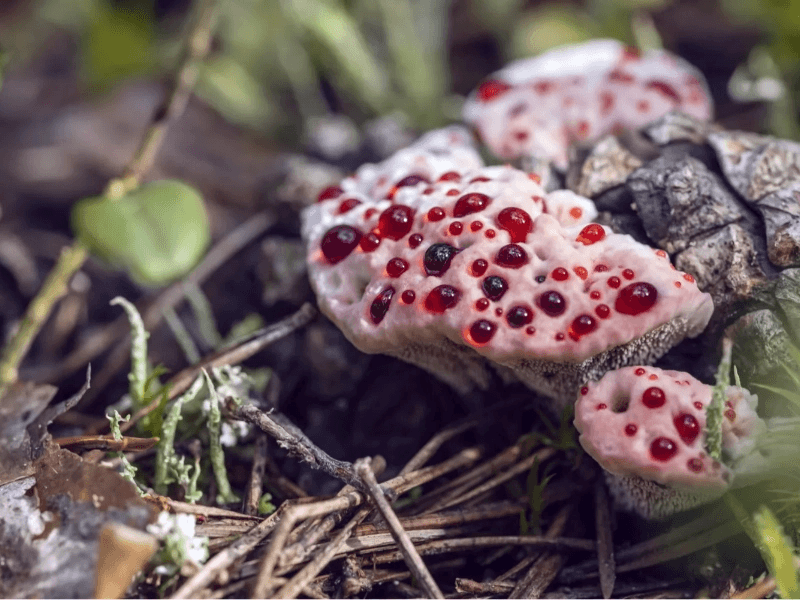
Amethyst Deceiver (Laccaria amethystina) Named for its vibrant purple hue, this small woodland mushroom is found across Europe, North America, and Asia. Its color fades with age, making identification tricky. Edible with a mild taste, it is commonly added to soups and stews.
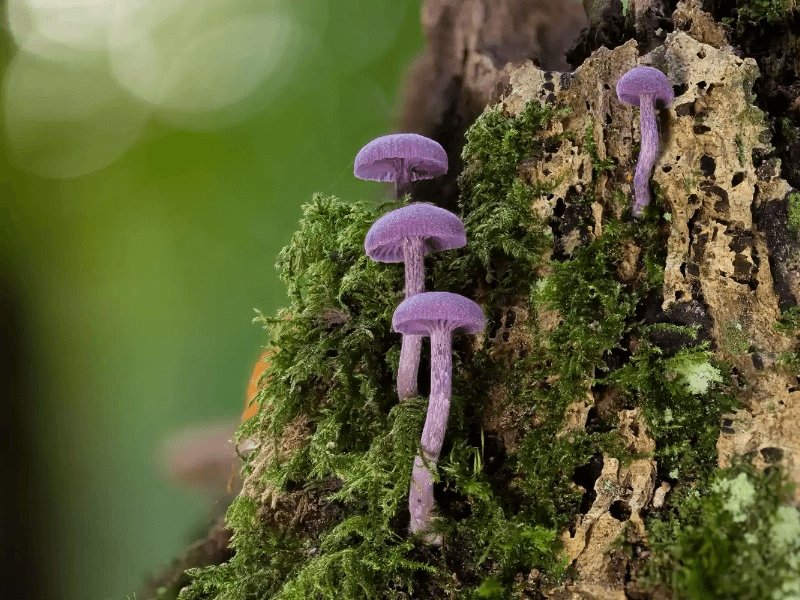
Veiled Lady (Phallus indusiatus) Recognized for its delicate, lace-like skirt (indusium), the Veiled Lady emits a foul odor to attract insects. Found in tropical regions, it has been used in traditional Chinese medicine. Despite its scent, it is sometimes consumed as a delicacy.
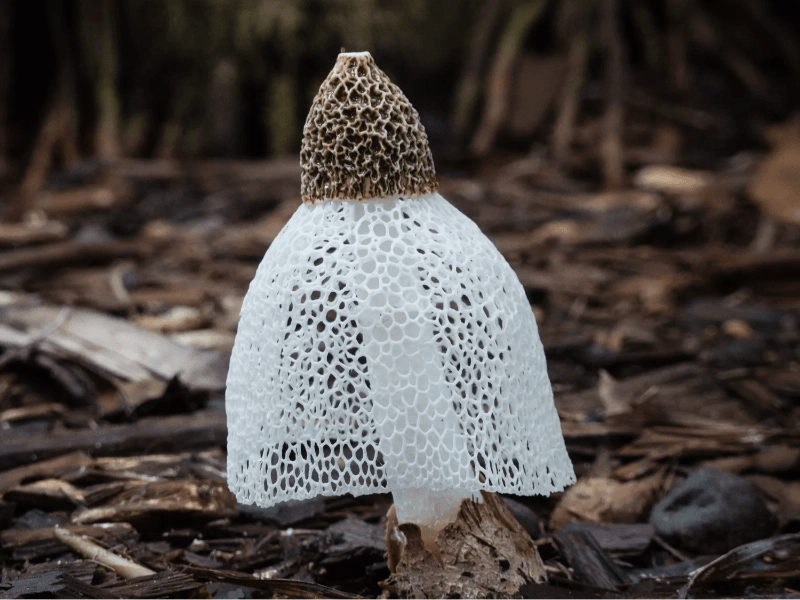
Bioluminescent Fungus (Mycena chlorophos) This glow-in-the-dark mushroom emits a faint green light in dark conditions. Thriving in humid forests of Asia, Australia, and Brazil, its luminescence results from a reaction between luciferin and oxygen. While not toxic, it lacks significant culinary value.
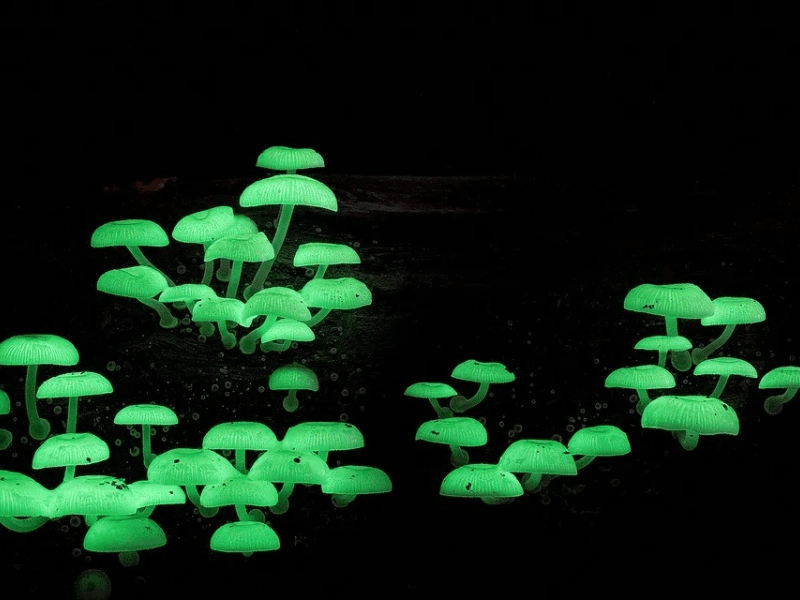
Dog Stinkhorn (Mutinus caninus) Named for its resemblance to a dog’s phallus, this mushroom has a foul-smelling slime that attracts insects for spore dispersal. Common in woodlands and gardens of Europe and North America, it is not toxic but is generally avoided due to its odor.
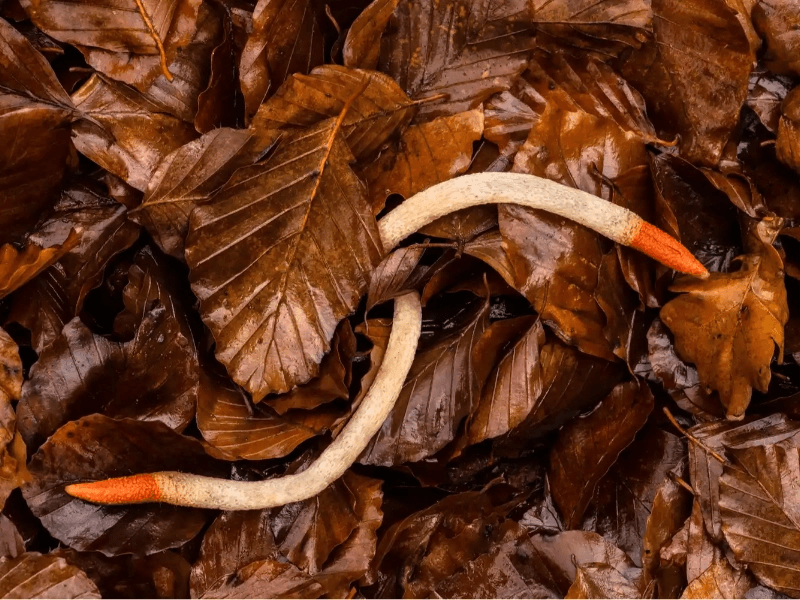
Blue Pinkgill (Entoloma hochstetteri) This rare, vividly blue mushroom is native to New Zealand and India. While its edibility is unknown, it holds cultural significance in New Zealand, appearing on currency and stamps. It plays a role in forest decomposition and nutrient cycling.
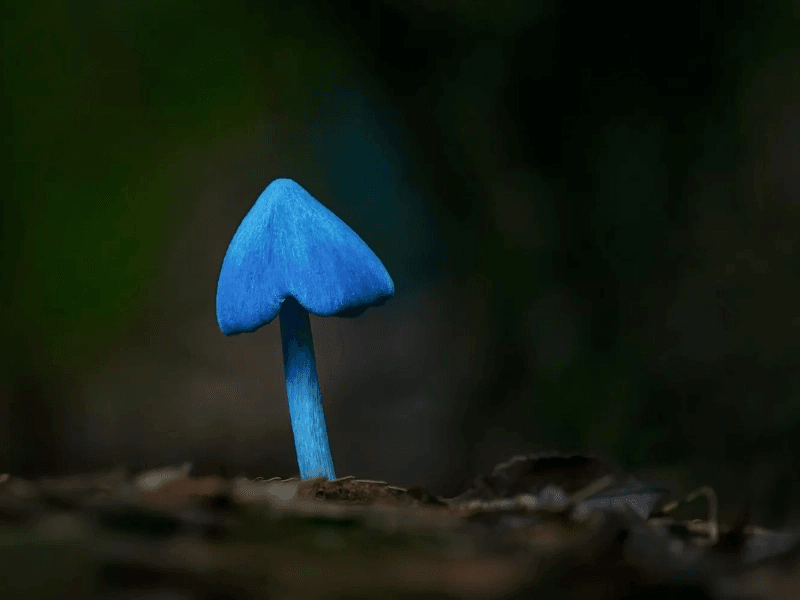
Turkey Tail (Trametes versicolor) A widely recognized medicinal mushroom, Turkey Tail features multicolored bands resembling a turkey’s tail. Found on decaying logs worldwide, it is rich in antioxidants and supports immune function, often consumed as tea or an extract.
From glowing fungi to vividly colored species, these mushrooms highlight the incredible diversity of nature. Whether admired for their beauty, studied for their medicinal properties, or valued for their ecological roles, these fungi remain some of the most intriguing organisms on Earth.
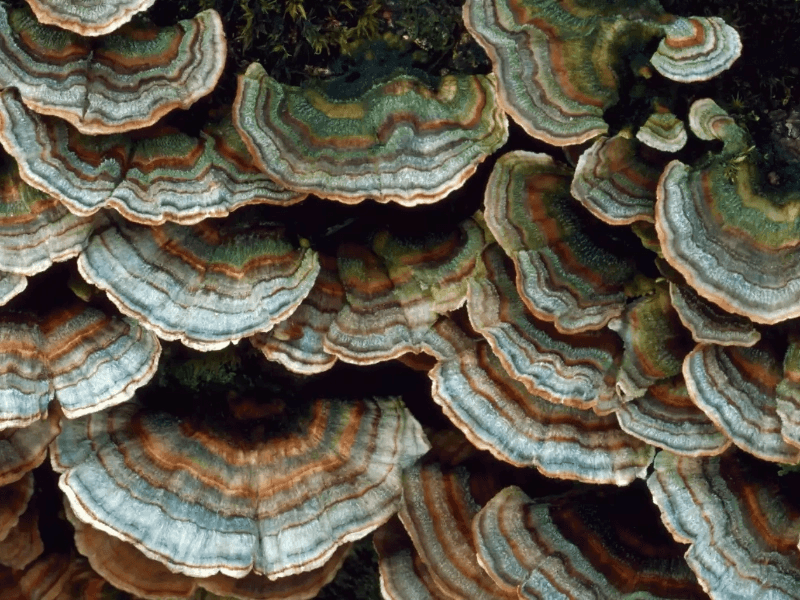
Leave a Reply